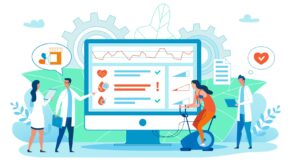Efficiency and Effectiveness: What is the Difference and How to Achieve?
It is possible to come across the word’s efficiency and effectiveness in most corporate scenarios. It is used frequently by sales VPs and CEOs when they are forming the organisation’s course. However, it is possible to misinterpret these words very easily and it is not a common problem just in the business world, as it can be quite frequent even in daily life. These two words are mutually different from each other. If one element is present, the other is absent and vice versa. However, there are some crucial differences that happen to bring about a change in usage.
Understanding The Terms
There are a lot of tools and practices being employed in order to improve workplace efficiency, which is the manner of getting the jobs completed. The efficiency is directly proportional to the speed and quality of the job and it is also referred to as a smarter work. The understanding of the difference between these two elements is very important for any job seeker and every recruiter such as those on Jobsora – they will be aware of this.
Even though efficiency is one of the cornerstones of a business, there is also another factor of the business world – effectiveness. Even though effectiveness is vaguely related to efficiency, it happens to be very separate when it comes to determining the success of the business. This is largely because effectiveness is the reflection of the task that is completed. In short, it is effectively the results that are produced by the job.
The technology can make a business efficient along with a lot of procedures, but it may not necessarily result in improving the quality. In such a case, the advantage of being efficient is lost in the process. There are some crucial differences between effectiveness and efficiency, which are important in various aspects of a business.
Objectives & Goals
Every business has a goal which is largely about profits and revenue. There may be a goal to increase the revenue by 10% over the next year. There could also be a goal of increasing the business consumer base by 5%. The process of meeting these goals will be the business’ effectiveness.
However, objectives are quite different and they are about the activities and tasks that are applicable in order to meet this effect. A logistics system needs to be applied in order to increase production by streamlining the inventory. A new software can also be brought in to improve the automated responses and structure. This can take place even during or after the sales.
These are some of the different aspects that explain efficiency, which is all about performing things in a smarter, faster, and better way so that the goals set by the organisation can be achieved. The activities that need to be performed and accomplished in order to meet these goals happen to be the objectives. These objectives have to meet an end goal in order to be termed as an effective result.
The differences can be better explained with an example: assume an area where consumers have the choice between Wi-Fi and TV providers. The turnover rate tends to be very high in such a region, as the customer service could be bad. In order to achieve greater efficiency, most of the companies would have gone with an automated phone answering system so as to address the queries put forward by the customers.
The goal of the automated answering system is to eliminate the need for a high paid individual to handle simple queries. The automated answering system significantly cuts down the number of calls that end up reaching a real employee. However, this can result in lower effectiveness since customers can switch providers after being irritated by the long response time and the need to press a whole lot of buttons. Even though efficiency appears to have saved a lot of money, the lack of effectiveness will end up hurting the company’s business.
Best Application of Effectiveness
The best application of both effectiveness and efficiency is seen in the leadership area of business. The growth of technology has offered several ways to increase the efficiency of leadership tasks. The ultimate goal of tools like email and project management software should be about freeing up leaders for better effectiveness. Even if a lot of efficiencies are placed into the business, it may not necessarily be effective. There is a hidden problem of “efficiencies” disrupting the team morale and adversely affecting the business.
Best Application of Efficiency
The best application of efficiency is largely seen in the departments of sales and marketing. There are a number of tools that allow sales and salesperson to be monitored in a variety of ways. The efficiency can be increased by altering the style based on individual behaviour. Over a period of time, the vast amount of data that has been gathered from the customer can also be used to increase the efficiency even further by targeting people with the right product at the right time.
The marketing department stands to gain a lot by increasing efficiency, as it allows the salesperson to focus more on live ends rather than the dead ones in the pursuit of new customers.
Achieving Perfect Balance
At the end of the day, every business owner needs to find a good balance between efficiency and effectiveness. The pendulum should always swing in terms of the latter when it comes as a close fight between the two parameters. The goals and objectives – that largely decide on the profits – will ultimately be measured in terms of effectiveness. However, many businesses do make the mistake of going towards efficiency, which is often measured by putting together a lot of smart tools so as to streamline processes and procedures. This may appear to increase efficiency and effectiveness at the same time, but the latter is gradually lost in the long term. Even though technology is extremely helpful at automating tasks, it should not sacrifice the effectiveness of the company’s goals.








![The Future of the Bionic Body [Infographic]](https://technofaq.org/wp-content/uploads/2019/04/Screenshot_20190429_235951-150x150.png)







